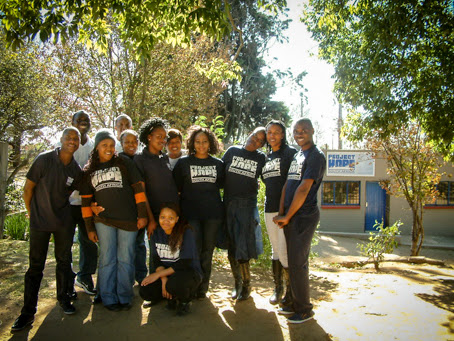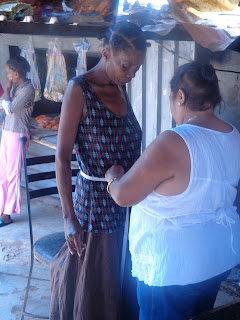Here below is a wonderful post from our own Lindelwa Myali, the Patient Liaison Officer at the HOPE Center Clinic in Zandspruit South Africa and a testimony to the great job she does from one of our patients.
Hi I’m Lindelwa Myali, the Patient Liaison
Officer. I joined Project HOPE in September 2012. I am certified in HIV testing
and counselling but have been working in the area of diabetes and hypertension since I joined Project HOPE. I am based at the clinic and I provide two types of services to my patients:
1. Patient education:
I give patient education to all patients
who come to the clinic. For lifestyle changes for diabetic and hypertensive
patients, I hand out the “Dietary
Guildelines” sheet which we have in several languages. To them my main message is “I know that we
are poor here in the township but please try to eat at least two fruits and two
vegetables per day”. Drink at least 8
glasses of water a day and stay away from sugar and salt as much as
possible. Take your medication as I tell
you and I can assure you your glucose and blood pressure levels will decrease
significantly.
2. Treatment and adherence:
I give
patients information about the medication that they are taking with guidance
from our medication information pamphlets.
I present each patient with a pamphlet and together we discuss it. I repeat the same
exercise twice or even thrice to some patients when they come back to the
clinic for the regular check-ups. I only
release the patient when I am 100% satisfied that they are fully
compliant. I keep a register of all my patients
so I am able to track when I see them. A newly referred patient was taking
medication for two years but had no idea why she was taking it.
I really like these forms that Project HOPE
has done as it brings structure to my role and has raised my confidence in
dealing with patients and I am hoping that we can get these all translated now into local languages.
 "Hi, I am Gladys Ngcobo. I am both diabetic and hypertensive. I first came here in December 2012. My blood pressure was 138/80 and now it is
123/72. I love this clinic, can you see that my appointment finished long ago
but I am still hanging around here. The
staff treat us with respect. Everyone
has a smiling face and they make us feel welcome. I love Lindelwa and the work that she is
doing. She explains everything so well
to me and when I don’t understand, I ask her again and again! Before I came
here, I did not know what it is like to be treated well in a clinic. I love
these sheets that Lindelwa gives me. I
read them every morning before I take my medication. I also like the fact that
we get appointment cards. I will never
leave this Project HOPE clinic."
"Hi, I am Gladys Ngcobo. I am both diabetic and hypertensive. I first came here in December 2012. My blood pressure was 138/80 and now it is
123/72. I love this clinic, can you see that my appointment finished long ago
but I am still hanging around here. The
staff treat us with respect. Everyone
has a smiling face and they make us feel welcome. I love Lindelwa and the work that she is
doing. She explains everything so well
to me and when I don’t understand, I ask her again and again! Before I came
here, I did not know what it is like to be treated well in a clinic. I love
these sheets that Lindelwa gives me. I
read them every morning before I take my medication. I also like the fact that
we get appointment cards. I will never
leave this Project HOPE clinic."















































